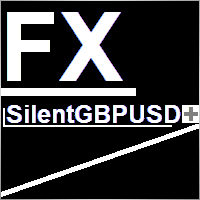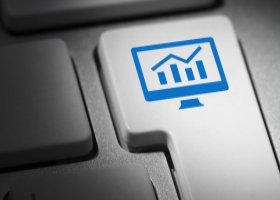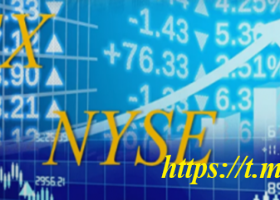
FOMC Feedback Loop Takes a Hawkish Turn, USD/JPY Rips

Talking Points:
- Friday’s Jackson Hole speech from Ms. Yellen actually appeared to elicit USD weakness after an initial spike of strength, but in an interview later in the session, Federal Reserve Vice Chairman Stanley Fischer mentioned that forward-looking data would be instrumental to future rate-hike plans, placing heavy emphasis on this Friday’s Non-Farm Payrolls report.
- After Mr. Fischer’s comments, the U.S. Dollar began a top-side run that has yet to recede. We also heard from BoJ Governor Kuroda at Jackson Hole, and he helped to fire even stronger expectations for enhanced stimulus coming to Japan. The next BoJ decision is on September 20-21, and they announce their rate decision/stimulus plans just ahead of the next Federal Reserve meeting (also meeting September 20-21).
- If you’re looking for trading ideas, check out our Trading Guides. And if you want something more short-term in nature, check out our SSI indicator. If you’re looking for an even shorter-term indicator, check out our recently-unveiled GSI indicator.
To receive James Stanley’s analysis directly via email, please SIGN UP HERE
Chair Yellen’s speech at Jackson Hole did not disappoint for those who were looking for information that might drive price action. Last week, we mentioned the numerous Fed members that had talked up the prospect of higher rates before we even got to the start of the Jackson Hole Economic Symposium, but the U.S. Dollar hadn’t responded until shortly after Chair Yellen’s speech on Friday.
And Chair Yellen’s speech wasn’t exactly a commitment to hiking rates at September, but she did mention a strategy that could more ably allow the bank to finally work towards ‘normalization’ of interest rate policy. This speaks to the Fed Feedback Loop and the fact that each time the bank has moved towards higher rates in the past, whether it be through actual interest rate hikes or through hawkish commentary alluding to future interest rate hikes, risk assets have begun to sell-off. This creates a ‘rock and a hard place’ scenario where, while the Fed wants to hike rates to move the U.S. economy off of ‘emergency-like’ policy, they alsofear the repercussions of what tighter monetary policy might do when there are so many global risk factors that could flare-up, as we saw in August of last year and then again in January of this one.
In Janet Yellen’s speech, she said that the case for a rate hike has strengthened in recent months. And she also alluded to the fact that should the global economy move back into recession; the Fed could look at more QE. So this is like the ultimate hedge from the Federal Reserve as this could allow the bank to hike rates as market fears of tighter policy can be assuaged by the potential for another round of QE out of the United States. This could create a scenario in which the Fed may be able to hike rates while also not bringing-on the massive risk aversion that has shown
But through all of this – the net response was U.S. Dollar weakness. After initially spiking higher on Ms. Yellen’s claims that the case for a rate hike has strengthened in recent months, the nod to more QE elicited the default expectation from markets (for the Fed to stay loose and passive). It wasn’t until a Stanley Fischer interview on a Business News Television Channel shortly after Ms. Yellen’s speech that rate expectations began to dance higher. Mr. Fischer said that the August jobs report, set to come out this Friday, will be a key determinant as to whether or not the Fed stages a hike in September.
This made Ms. Yellen’s claims from earlier in the day all the more real, as before Mr. Fischer’s interview the expectation for a hike in September remained below 20%. But after Mr. Fischer pinned hopes on forward-looking data, including this Friday’s jobs reports, those expectations for near-dated hikes grew and the U.S. Dollar drove higher. On the chart below, we look at this chaotic price action from Friday morning in order to dial-in on that near-term trend of USD strength.

FOMC wasn’t the only bank talking about QE, as we also heard from the Bank of Japan. BoJ Governor Haruhiko Kuroda said that the bank would not hesitate to boost their monetary stimulus as needed. After his speech, markets began to factor in a higher probability of another ‘Japanese Bazooka of Stimulus’ to be launched in September of this year. In July, two weeks ahead of the most recent BoJ rate decision, we had mentioned that September would be an opportune time for Japan to investigate even more stimulus.
But markets were continuing to price-in some type of announcement for July, and when the BoJ underwhelmed those expectations the Yen strengthened to resistance against the U.S. Dollar at the psychological ¥100.00-level. We looked at this setup in the Yen just a couple of days before the Jackson Hole Economic Symposium began, and as we mentioned, should FOMC elicit USD-strength on the back of stronger rate expectations, USD/JPY could be an attractive venue to voice that theme as the underlying rate-trajectory divergence could continue to lift Dollar-Yen higher.
On the chart below, we’re looking at USD/JPY through the month of July. The first half of July saw markets pricing-in USD strength and Yen weakness as bets for more stimulus continued to grow. But after the BoJ underwhelmed in July, those stimulus bets came-out of the market and USD/JPY ran right back down to support. After spending nearly two weeks building support at the psychological ¥100.00 level, the pair is now driving higher as it appears as though we have a return of that prior theme of USD strength, as driven by higher rate expectations, and Yen weakness as driven by BoJ stimulus bets.

My Products:
https://www.mql5.com/en/users/soubra2003/seller


